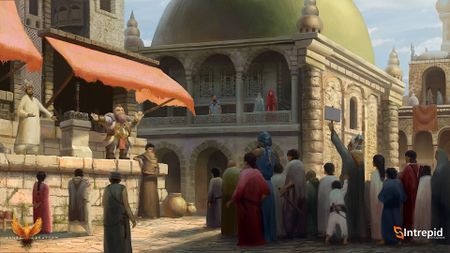Vasallen-Nodes

This vassal mode structure tells you what it looks like for a sovereign at a level six metropolis stage; and what it can control at a maximum vassal network is two level five nodes, of which a level five node can control one level four and one level three as direct vassals; and then the four can control a three; and every three can control a one or a two. Now if the three gets removed through siege, the one or the two is removed as well. So that's an important distinction between the three's vassals, which technically isn't really a vassal relationship because there's no citizenships possible. Those vassals don't exist between three and X, but they do exist between four and three, five and four, and six and five. And what this also allows is that because there are 85 nodes that are within the world, we have a buffer zone of about 20 nodes that lives in a max server state. So if you had maximum five metropolises form in a world, you will have a number about 20 nodes that can live alongside those metropolis networks; and when or if a metropolis falls, that extra cushion of nodes around the five metropolis structures allows for the map to be redistricted in a way that is unique. It doesn't mean that one of the fives is just going to pick up where the last six left off and form the same exact metropolis structure. From a territory perspective it has ancillary nodes to play with and expand towards that redistricts the map, so that if a metropolis falls there's a significant difference in the layout of the world and the layout of these almost nation-like territories.[1] – Steven Sharif
Village (stage 3) or higher nodes enslave nearby nodes, converting them into vassal nodes.[2][3]
- A Metropole (Stufe 6) can control up to two Großstadt (Stufe 5) nodes. A Großstadt (Stufe 5) can control one Stadt (Stufe 4) and one Dorf (Stufe 3) node. A Dorf (Stufe 3) can control an Feldlager (Stufe 2) or an Expedition (Stufe 1). If the Dorf (Stufe 3) gets destroyed through a siege, its dependant Feldlager (Stufe 2) and Expedition (Stufe 1) nodes are also destroyed.[1]
- There is a layer of intricacy between how the neighboring nodes advance and what potential parent structure they have in the vassalship tree.[4] – Steven Sharif
- Vassal nodes gain benefits from their regent node (also referred to as sovereign node or parent node) even if the node type of the parent is different to the vassal.[5][6]
- It is not a bad thing to be vasseled, it is a good thing to be vasseled. It brings many benefits from the Sovereign, which is the ultimate parent of that vassal network down to the vassal node itself; and it allows that vassal node to even live outside of its normal mechanics. You get to adopt some of the benefits that the node type of your sovereign is, even if your node type as a vassal node isn't the same.[6] – Steven Sharif
- Regent nodes collect taxes from their vassal nodes. These taxes cannot be taken by the mayor or other players.[8]
- Vassal nodes must remain at least one node stage below their parent node.[2]
- Neighboring/Adjacent nodes from Expedition (Stufe 1) upward block the growth of their immediate neighbors. This was intended to be tested in Alpha-1.[9][3]
- Vassal nodes first apply any experience earned to their own deficit (see Atrophie des Knotenpunkts). It then applies excess experience earned to its parent node.[10]
- If the parent node advances, the vassal is once again able to advance.[2]
- Vassal nodes give excess experience to their parent node and may have their own vassals; so long as they fall within the parent node’s zone of influence.[8][2]
- If a node is capped and is both a vassal and has its own vassals, any experience earned from itself or its Vassals is first applied to its own deficit. Experience beyond that is then sent to its parent node.[10]
- When the vassal reaches its cap it overflows experience up to the parent; and so it can be very good early on for parents to get vassal nodes that are very productive- that have a lot of traffic.[8] – Steven Sharif
- Vassals are subject to the government, alliances, wars, taxes, and trade of their parent node, and are able to receive federal aid from them.[2]
- Vassal nodes cannot declare war on their parent node or any of their vassals.[2]
- Citizens of vassals are bound by the diplomatic states of the parent node.[2]
- If a Node is a Vassal Node and is capped from advancing further, it first applies any experience earned to its own deficit (see Node Atrophy section), and then applies excess experience earned to its Parent Node. If the Parent Node advances and the Vassal is able to grow, it becomes uncapped. If a Node is capped and is both a Vassal and has its own Vassals, any experience earned from itself or its Vassals is first applied to their own deficit. Any experience beyond that is then sent to its Parent Node.[10] – Margaret Krohn
Adjacent/Neighboring nodes
Angrenzende Nodes (Nachbar-Nodes) blockieren ab Node Stufe 1 (Expedition) das Wachstum ihrer direkten Nachbarn .[9][3]
- Hierzu sind Tests während der Alpha-1 geplant.[9][3]
- Vasallen-Nodes müssen immer mindestens eine Node-Stufe unter ihrer übergeordneten Node bleiben.[2]
Entwicklung der Node
Alle Aktivitäten (Aufträge, Sammeln, Schlachtzüge, etc.) welche von Bürgern sowie allen anderen Spielern innerhalb des Einflussbereichs einer Node ausgeführt werden, tragen zum Wachstum (Fortschritt) dieser speziellen Node bei.[10][11]
Durch das Wachstum einer Node werden einerseits deren einzigartigen Inhalte freigeschaltet, andererseits wird der Fortschritt der umliegenden Nodes auf die nächste Stufe blockiert.[12]
- Nodes steigen schnell auf die erste Stufe auf. Dadurch entstehen die ersten NPC-Dienstleistungen, beispielsweise der Verkauf oder die Aufbewahrung von items.[13]
- Je fortgeschritttener die Node ist, desto größer ist ihr ZOI.[14]
- Weniger weit fortgeschrittene Nodes (auch Vasallen-Nodes genannt), welche im Einflussbereich einer höherstufigen Node liegen, können weiterhin Erfahrung sammeln, jedoch müssen sie stets mindestens eine Stufe unter der ihrer übergeordneten Node bleiben.[15]
- Das Vasallen-System tritt erst ab Node-Stufe 3 (Dorf) in Effekt, jedoch blockieren Nodes bereits ab Node-Stufe 1 (Expedition) das Wachstum ihrer direkten Nachbarn.[9][3]
- Der Algorithmus zur Gebietserweiterung berücksichtigt nahegelegene Küsten, benachbarte Nodes, und die am häufigsten Besuchten Orte von Spielern innerhalb der letzten Woche, bzw. des letzten Monats.[16]
- Aufgrund der Art und Weise, wie dieser Algorithmus den neuen Einflussbereich während des Aufstiegs berechnet, kann es vorkommen, dass zwei Nodes mit der gleichen Node-Stufe nah beieinander liegen.[17]
Die Art und Weise, wie der Algorithmus die Gebiete erweitert, berücksichtigt einige Dinge: Erstens berücksichtigt er die Küste, beispielsweise wo die nächstgelegene Küste ist. Zweitens berücksichtigt es die benachbarten Modepunkte, sodass es diese Nodepunkte übernehmen und im Wesentlichen zu Vasallen machen kann. Wichtiger ist jedoch im Wesentlichen die anfängliche Bevölkerung, die darauf basiert, wie die Spieler ihre Rassen auswählen. Da wir neun verschiedene Rassen und vier verschiedene Startpunkte haben, die sich verzweigen, bestimmt die Bevölkerungsdichte jedes Servers im Wesentlichen die ersten paar Knoten, die stark bevölkert sind, und dieser anfängliche Samen bestimmt dann die Knotenstruktur, wenn er landeinwärts wandert das in die Welt im Wesentlichen; und basierend auf der Leistung und den Erfolgen verschiedener Belagerungen wird bestimmt, welche Node, die von den vorherigen anfänglichen Weiterentwicklungen ausgeschlossen wurden, welche Node jetzt für weitere Fortschritte verfügbar sind. Ich glaube also wirklich, dass bei so vielen Variablen, die in der Gleichung dafür vorhanden sind, wie Nodes voranschreiten und bestehen bleiben, die Wahrscheinlichkeit umso höher ist, dass es zu einer erheblichen Abweichung im Weltfortschritt kommt, je mehr Variablen man hat.[16] – Steven Sharif
Normalerweise verhindert der Algorithmus, der auf die territoriale Erweiterung der Node angewendet wird, dass wichtige Knoten nahe beieinander liegen Es gibt bestimmte Anforderungen, die verfügbar sein müssen, um Nodevasallenübernahmen zu erfüllen. Und es ist möglich, dass zwei Nodes sich niemals gegenseitig als Vasallen übernehmen und am Ende nahe beieinander liegen und ihre Territorien in entgegengesetzte Richtungen umspannen: Die Sache mit der Geschichte zweier Städte.[17] – Steven Sharif
- Vasallen-Nodes geben überschüssige Erfahrungspunkte erst dann an ihre übergeordnete Node weiter, wenn sie ihre Level-Grenze erreicht haben..[15]
- Die Möglichkeiten, für eine Node Erfahrungspunkte zu sammeln, sind für alle Arten von Nodes gleich.[19]
- Um Manipulation zu vermeiden, ist die exakte Anzahl an hinzugefügten Erfahrungspunkten für die Node durch das Erhalten von Gegenstände oder dem Töten von Gegnern nicht bekannt.[20]
Verschiedene Leute investieren unterschiedliche Ressourcen in die Weiterentwicklung von Nodes, und es wäre ein wenig „spielerisch“, wenn man genau wissen könnte, was zu diesem Zeitpunkt notwendig ist, denn das würde die Leute von der Teilnahme abhalten.[20] – Steven Sharif
Verschiedene Animationen und visuelle Effekte innerhalb der Grundfläche einer Node leiten den Beginn des ihres Aufstiegs ein.[21][10]
- Spieler, die sich zu diesem Zeitpunkt innerhalb der Node befinden, werden zu einem sicheren Ort teleportiert (beispielsweise einem Spawn-Punkt).[21][22]
- Um die Node herum spawnen Materialien, welche von systemgesteuerten Karawanen in die Node transportiert werden. Diese Karawanen können nicht angegriffen werden.[21]
- NPCs beginnen mit den Bauarbeiten.[21]
- Spieler, welche sich außerhalb der Node befinden, können die stufenweise visuelle Transformation der Node beobachten.[21]
Das Entwicklungsgebiet eines Nodepunktes ist der Ort, an dem die Zivilisation erscheint, wenn der Knotenpunkt voranschreitet. Mit zunehmender Nodestufe werden im Entwicklungsbereich verschiedene Gebäude, NPCs und Dienste verfügbar. Je höher die Nodestufe, desto komplexer und bevölkerter wird das Entwicklungsgebiet. Entwicklungsgebiete variieren auch je nach Knotentyp – wirtschaftlich, militärisch, wissenschaftlich oder göttlich.[10] – Margaret Krohn
Taxation
Bürgermeister können Steuersätze für ihre Node festlegen.[23]
- Dazu gehört auch das Festlegen von Steuersätzen, die für Wirtshausspiele gelten.[24][25]
Bürgermeister/Node-Regierungen weisen Ressourcen, Steuern, und Aufträge zu , um bei der Entwicklung der Node zu helfen.[26]
- Steuergelder fließen nur in die Finanzierung der Nodeentwicklung. Dieses Gold kann nicht vom Bürgermeister oder einem anderen Spieler abgehoben werden. [8][27]
- Die Steuersätze skalieren basierend darauf, wann ein Spieler einer Node als Bürger beigetreten ist. Das Ziel ist es, finanziellen Druck auf die Node-Populationen auszuüben, indem die Steuern mit fortschreitenden Nodes, immer teurer werden, anstatt harte Bevölkerungsobergrenzen einzuführen. [28]
Übergeordnete (souveräne) Nodes erhalten einen Teil von allen Steuern aus Unterkünften und Dienstleistungen, welche von ihren Vasallen-Nodes gesammelt werden. [8][29]
- Diese Steuer wirkt sich nicht unbedingt auf den einzelnen Bürger, da die Steuersätze der Bürger von ihren Nodes bestimmt werden , aber die Finanzen der Node wird von der Besteuerung beeinflusst, die von seiner übergeordneten Node erhoben wird.[29]
Atrophie des Knotenpunkts
Nodes accumulate an experience deficit each day based on the node's level, called node atrophy. The deficit is subtracted from any experience earned that day. If any deficit remains, then this is subtracted from the node’s experience pool.[10]
- An atrophy system may be implemented, where accumulated atrophy points will progressively disable services within a node. The node may be destroyed if a significant points threshold is reached.[17]
- There are intrinsic problems with reducing a nodes level as opposed to removing the node and it may be possible I'm just gonna say now that we don't actually atrophy nodes to delevel but rather accrue atrophy points that must be replenished over time; and if not it begins to disable services and further compound the atrophy problem; at which point when it reaches a certain atrophy point then the node would just disappear.[17] – Steven Sharif
World manager
The World manager is an algorithm in Ashes of Creation that controls dynamic world elements. It acts as both a throttle and an incentive system for various activities to ensure certain parameters are within acceptable thresholds.[30]
- A world manager is a technical term to define a server process that lives alongside the game server; and when the game server needs to do things- communicating with other game servers within that grid- it tells that manager and that manager sends it down to the appropriate server.[31] – Steven Sharif
- Prices of glint.[32]
- A heatmap of experience being gained to apply to node advancement.[32]
- The territory expansion algorithm takes into account the nearest coast, neighboring nodes, and the heatmap of players in surrounding areas over the last weeks or month.[16]
- Due to the way the progression algorithm calculates territorial (ZOI) expansion during node advancement, there is a small possibility that two nodes of the same stage end up being close to each other.[17]
- Transit of resources and goods between regions to drive quest rewards for nodes.[32]
- For example if you know iron is being used as a raw resource for a specific crafting path that might drive up the price of mithril or silver; and that will incentivize the market to course correct a little bit. The idea is to provide soft incentives that help to alleviate the demand and also to prop up the supply that might not be present from the economic systems.[32] – Steven Sharif
Auktionshäuser
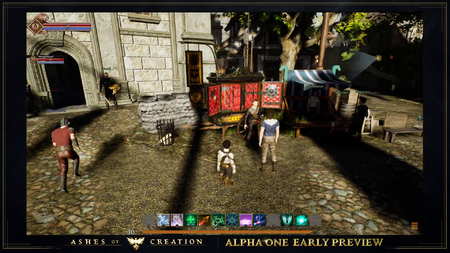
If a Node is the Vassal Node of an Economic Node, an Auctioneer NPC appears in that Vassal Node. The Auctioneer allows players to list non-resource/processed materials in the Parent Node’s Auction House, but players cannot bid on items from this Auctioneer. These resources and processed materials must be stored within an Economic Node in order to be listed in that Node’s Auction House. In order to bid, they must still travel to the Auction House in the Parent Node.[34]
Auktionshäuser enable players to list items at specific nodes.[35][36]
- Previously this was stated to be at the economic node in which the auction house is located. The new quote may not necessarily contradict this statement.[37]
- Auction houses allow items and resources to be listed for sale at a specific node location.[35] – Steven Sharif
- A listing fee will be charged to list items in the auction house.[37]
- Vasallen-Nodes of the auction house node will be able to view items that are listed on that auction house, regardless of node type of the vassal node.[37]
- Items listed are also visible in community boards (bulletin boards).[38]
- Integrated auction houses allow players to purchase items directly from remote auction houses.[38]
- Purchases of materials and gatherables will be automatically deposited within the listing node's local warehouse. Players will need to travel to that warehouse to retrieve them. Players wishing to move these items elsewhere will need to utilize the caravan system or other type of transportation.[39][37]
- Purchases of anything other than materials and gatherables will be mailed to the purchaser.[39]
- There may be a taxation difference between auction houses versus other player businesses.[37]
- On a regular cadence, a number of a node's freehold parcels become available to be bid for at auction.[40]
- Data relating to auction houses, such as price history, volumes, average prices, may be available to players via a mayor-constructed service building in their node.[41]
- That's probably how it's going to be surfaced... Your your mayor is going to have to build it for you.[41] – Jeffrey Bard
Auction house locations
Auction houses accompany unique node buildings in Wirtschaftliche Nodes.[34]
- Marktplätze in Dorf level economic nodes have auction houses that allow raw resources and crafting materials to be posted.[34]
- Exchanges in Stadt nodes have expanded auction houses that allow all goods/items to be posted.[34]
- Wirtschaftliche Nodes that have reached the metropolis stage unlock the linked economy superpower.[34]
- Up to two economic metropolises may be linked in this manner.[43]
- Metropole level economic nodes enable worldwide sale prices for auction houses across Verra.[34]
- Items listed in one linked economic node can be bid on from any other linked economic node.[34]
- Linked economies also connect an economic metropolis and its vassal economic nodes.[38][34]
Siehe auch
Einzelnachweise
- ↑ 1.0 1.1 1.2 Liveübertragung, 2022-08-26 (1:07:34).
- ↑ 2.0 2.1 2.2 2.3 2.4 2.5 2.6 2.7 Blog - Know Your Nodes - The Basics.
- ↑ 3.0 3.1 3.2 3.3 3.4

- ↑

- ↑ Liveübertragung, 2023-08-31 (52:56).
- ↑ 6.0 6.1 Liveübertragung, 2022-08-26 (1:04:35).
- ↑

- ↑ 8.0 8.1 8.2 8.3 8.4 Liveübertragung, 2022-08-26 (1:10:16).
- ↑ 9.0 9.1 9.2 9.3

- ↑ 10.0 10.1 10.2 10.3 10.4 10.5 10.6 10.7 Blog - Know Your Nodes - Advance and Destroy.
- ↑ A reactive world - Nodes.
- ↑ Video, 2017-04-20 (0:02).
- ↑
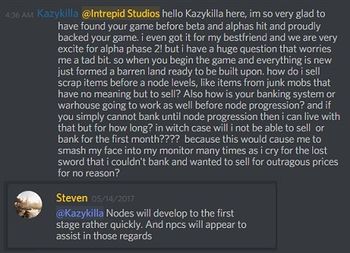
- ↑ Node series part II – the Metropolis.
- ↑ 15.0 15.1 Liveübertragung, 2017-10-16 (50:20).
- ↑ 16.0 16.1 16.2 Interview, 2020-07-18 (10:04).
- ↑ 17.0 17.1 17.2 17.3 17.4 17.5 Interview, 2020-07-08 (1:00:15).
- ↑
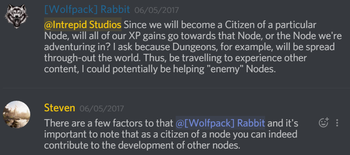
- ↑ Liveübertragung, 2021-09-24 (1:21:23).
- ↑ 20.0 20.1 Liveübertragung, 2017-05-26 (28:16).
- ↑ 21.0 21.1 21.2 21.3 21.4 Liveübertragung, 2022-10-14 (55:13).
- ↑ Liveübertragung, 2017-11-17 (55:27).
- ↑ 23.0 23.1 Liveübertragung, 2020-03-28 (1:03:38).
- ↑

- ↑

- ↑
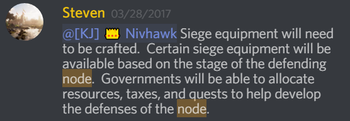
- ↑

- ↑ Interview, 2020-03-27 (0:30).
- ↑ 29.0 29.1 Interview, 2018-05-11 (57:02).
- ↑ Interview, 2020-07-19 (1:10:55).
- ↑ Liveübertragung, 2022-10-14 (57:22).
- ↑ 32.0 32.1 32.2 32.3 Interview, 2020-07-19 (1:08:22).
- ↑ Liveübertragung, 2020-03-28 (1:04:49).
- ↑ 34.0 34.1 34.2 34.3 34.4 34.5 34.6 34.7 Know Your Nodes: Economic Node Type.
- ↑ 35.0 35.1

- ↑ Unreal Engine Interview, 2017-05-23.
- ↑ 37.0 37.1 37.2 37.3 37.4 37.5 37.6 Liveübertragung, 2019-05-30 (1:26:16).
- ↑ 38.0 38.1 38.2 Liveübertragung, 2020-07-31 (1:34:06).
- ↑ 39.0 39.1

- ↑ Liveübertragung, 2023-06-30 (1:13:53).
- ↑ 41.0 41.1 Liveübertragung, 2021-03-26 (1:15:03).
- ↑ Ashes of Creation - The visuals.
- ↑


